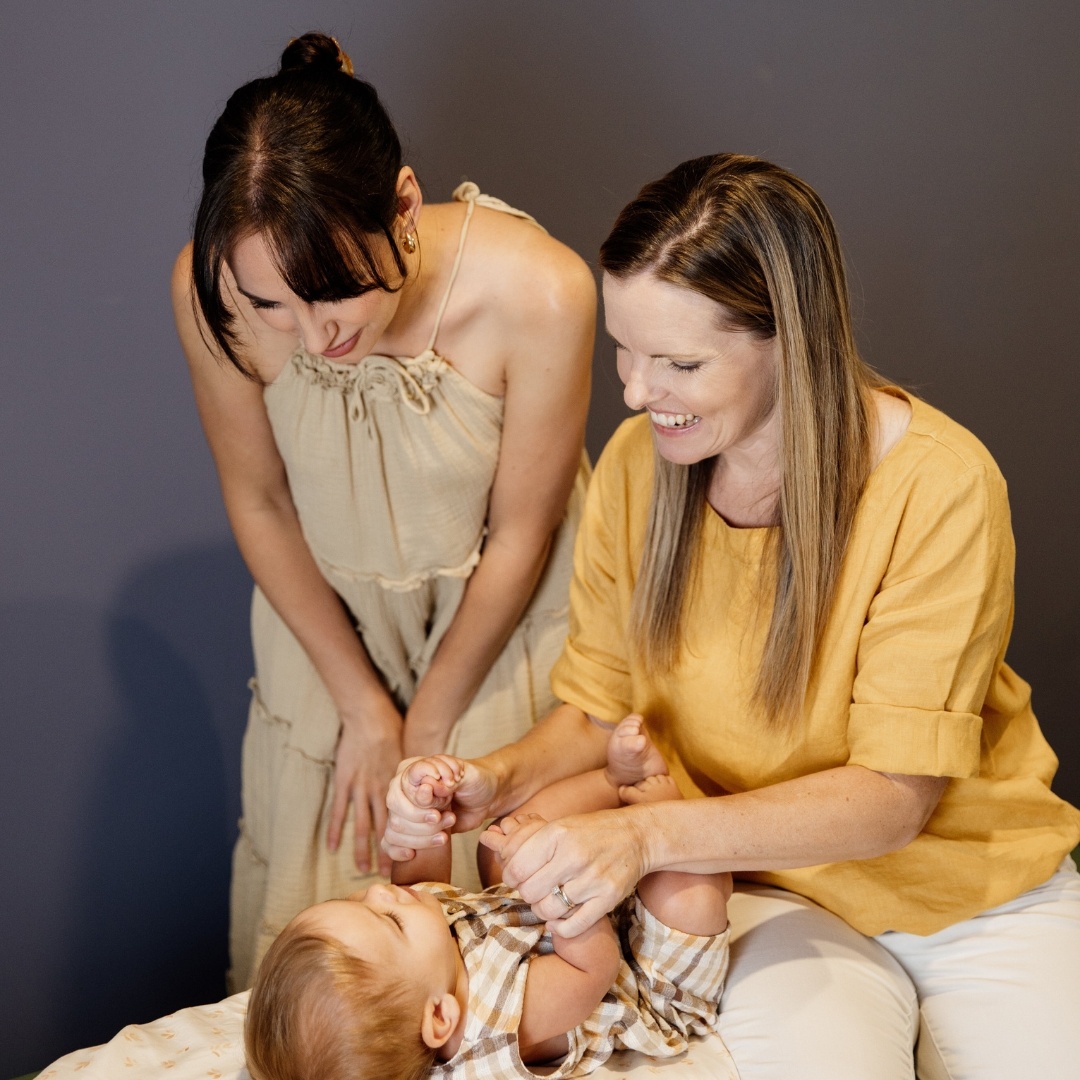Good muscle tone protects the joints of the spine and limbs against ligament sprain and helps to reduce injury risk as a child grows. When spinal muscle tone is reduced it can increase the chance of neck and back pain, and headaches due to spinal joint stress.
Injuries like dislocated shoulders, elbows and fingers or rolled ankles that happen over and over may be a result of reduced muscle tone protecting the joints.
Good muscle tone also holds the joints in a position for optimal alignment which supports good joint development (especially hips and shoulders in babies and children), again reducing stress/sprain from unusual postures or joint positions.
1. It's the foundational driver of effective development
- Muscle tone is the foundational driver of effective development, particularly optimal progression through gross and fine motor skill attainment.
- From rolling right through to hopping, skipping, riding a bike, playing sports, writing and typing - muscle tone is the crucial base underlying the appropriate achievement of all future movement skills!
2. Muscle tone supports appropriate ability and confidence with skills requiring balance and coordination
- Good muscle tone ensures children can feel safe in their bodies as they navigate new skills, new heights and new terrains - increasing their brain development and skill level.
- From a toddler climbing all the things through to a child or teen playing agile team sports or engaging in complex activities like rock climbing, martial arts, gymnastics, climbing trees, mountain bike riding or dancing - good muscle tone ensures a child is equipped with the musculoskeletal function they need to engage in their world!
- Having a body that is capable and reliable means a child can test themselves, continuing their development and building self-esteem and confidence as the go!
3. Muscle tone supports optimal postural alignment, appropriate centre of gravity between feet and over ankles, and effective body biomechanics.
- Being upright isn't an easy thing to do, and even sitting requires good muscle tone to keep our body up and functional. Many many big and little muscles around our spine, pelvis, shoulders and hips help to keep us upright and strong all day long.
- Good posture isn't just for looks! Optimal upright posture promotes optimal use of our musculoskeletal system AND increases our ability to breathe well to oxygenate our brain and body effectively among other things!
- Good muscle tone helps to effectively keep the musculoskeletal system upright and well aligned, with good movement patterns (biomechanics) to prevent or reduce the effects of wear and tear on our joints - aka aches and pains!
4. Good muscle tone in the early months and years is pivotal in the skeletal development of the lower limb.
- Optimal alignment of the hips, knees, ankles and feet is driven by good postural (spinal) muscle tone and leg muscle tone. When all the muscles work effectively, and gross motor development progresses well, it supports ideal alignment of the joints.
- We go from a flexed posture as a baby to a strong, upright and somewhat externally rotated and slightly abducted posture as we move through gross motor milestones. This 'opening' of the body encourages the legs to straighten out of knock knees and inturned and pronated (flat) feet.
- Ensuring a child's muscle tone is appropriate between the ages of 0-3yrs is supportive of optimal structural development of the low limb.
Did you know that muscle tone and muscle strength are different?
It's easy to confuse muscle tone and muscle strength, particularly with busy preschoolers, school children and adults.
- Muscle tone is the resistance of our muscles, even at rest.
- Muscle strength is the force our muscles can exert to move or lift the body or items around us.
It's not unusual for a child to have great muscle strength and can use their body well in the playground and during sports, however also have reduced muscle tone.
Want to learn more about how to support your child's muscle tone development? Book an Initial Appointment with our Chiropractic Team for a complete health assessment.




/Website%202024%20graphics.jpg?width=300&name=Website%202024%20graphics.jpg)

Comments